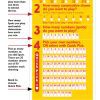Are you ready to up your poker game and learn about different betting strategies? Well, you’re in luck because in this article, we’re going to dive into the exciting world of poker and explore the various ways you can bet to maximize your chances of winning. Whether you’re a beginner or an experienced player, understanding these strategies can give you a significant edge at the poker table.
So, what are the different poker betting strategies? In poker, betting is a crucial aspect that can greatly influence the outcome of the game. It’s not just about the cards you hold; it’s also about how you bet and respond to your opponents’ bets. From aggressive betting to conservative approaches, there are several strategies that players employ to gain an advantage and outsmart their opponents.
In this article, we’ll explore some of the most common poker betting strategies, including bluffing, value betting, check-raising, and more. So, get ready to take your poker skills to the next level as we unravel the secrets behind successful poker betting strategies. Whether you’re playing with friends or competing in high-stakes tournaments, these strategies will help you make informed decisions and increase your chances of walking away with a winning hand. Let’s get started!
When it comes to poker betting strategies, there are several approaches you can take to increase your chances of winning. Here are some popular strategies to consider:
- Aggressive Betting: Betting big to intimidate opponents and force them to fold.
- Tight Betting: Only betting when you have a strong hand.
- Bluffing: Making strategic bets to deceive opponents into thinking you have a better hand than you actually do.
- Value Betting: Making bets that maximize your potential winnings.
- Slow Playing: Betting low initially to trap opponents into betting more before revealing your strong hand.

Exploring the Different Poker Betting Strategies
Welcome to our comprehensive guide on the different poker betting strategies. Whether you’re a novice player looking to enhance your skills or a seasoned pro seeking new tactics, understanding the various betting strategies in poker is crucial to your success at the table. In this article, we will delve into seven key betting strategies that can help you navigate the complex world of poker and make more informed decisions during gameplay.
1. Aggressive Betting
Aggressive betting is a strategy favored by many professional poker players. By placing large bets and raising frequently, you put pressure on your opponents and force them into making tough decisions. One advantage of this strategy is that it allows you to gain control over the hand, making it difficult for others to read your intentions. However, aggressiveness should be used selectively and with caution, as a single miscalculated move can result in significant losses.
To execute aggressive betting successfully, it’s important to be aware of your position at the table. When betting aggressively, you should aim to do so from late position or on the button, giving you the advantage of acting after the other players. Additionally, it’s crucial to pay attention to the behavior and tendencies of your opponents, adjusting your betting style accordingly. Remember, aggression can be a double-edged sword, so use it wisely and be prepared to adjust your strategy as the game progresses.
Benefits of Aggressive Betting:
1. Forces opponents to make difficult decisions.
2. Allows you to gain control and dictate the pace of the game.
3. Can lead to larger pots and potential for higher winnings.
2. Tight Betting
Unlike aggressive betting, tight betting involves playing fewer hands and being more selective with the hands you choose to bet on. This strategy is often preferred by conservative players who are looking to minimize risk and avoid unnecessary losses. By playing only strong starting hands, you increase your chances of winning when you do engage in a hand. However, it’s important to note that tight betting can sometimes be predictable, making it easier for observant opponents to exploit your strategy.
When adopting a tight betting strategy, it’s essential to stick to your predetermined range of strong starting hands. This means folding weaker hands and avoiding risky plays. Additionally, position plays a critical role in tight betting. As a tight player, you should aim to play from early position whenever possible, enabling you to act with more information about the strength of your opponents’ hands. Remember, patience is key when employing a tight betting strategy, as you may have to fold many hands before finding the right opportunity to strike.
Benefits of Tight Betting:
1. Minimizes the risk of losing with weak hands.
2. Allows you to focus on playing strong starting hands.
3. Helps maintain a more conservative bankroll management approach.
3. Bluffing
Bluffing is an essential skill in poker and can be an effective betting strategy when used correctly. The concept of bluffing involves making your opponents believe that you have a stronger hand than you actually do, forcing them to fold. However, bluffing requires careful judgment and timing, as it can easily backfire if your opponents see through your ruse.
To bluff successfully, you must be able to read your opponents and anticipate their reactions. It’s important to consider the specific circumstances of the game, such as the number of players, the strength of your opponents’ hands, and the overall table dynamics. Bluffing works best when it is unexpected, so mixing in occasional bluffs with strong hands can keep your opponents guessing. However, be cautious when bluffing against more experienced players who are adept at detecting bluffs.
Benefits of Bluffing:
1. Can win pots without having the strongest hand.
2. Allows you to keep opponents guessing and off-balance.
3. Enhances your overall table image and unpredictability.
4. Slow Playing
Slow playing is a deceptive strategy in which you intentionally underbet or check a strong hand to lure opponents into betting more. The goal is to give the impression that your hand is weaker than it actually is, enticing your opponents to invest more chips in the pot. While it can be a highly effective strategy, slow playing requires careful judgment and an understanding of your opponents’ tendencies.
To successfully execute a slow play, you must have a strong hand that you believe is unlikely to be surpassed by the community cards. It’s crucial to read the table and determine if there are potential draws or hands that could improve to beat yours. Slow playing works best against aggressive opponents who are likely to make large bets, thinking they have the best hand. However, be cautious not to slow play too often, as this can become predictable and lead to missed value opportunities.
Benefits of Slow Playing:
1. Maximizes the value of a strong hand by inducing larger bets from opponents.
2. Can deceive opponents and lead them to make mistakes.
3. Presents an unpredictable and strategic image at the table.
5. Positional Betting
Positional betting is a strategy that takes advantage of the information advantage you have based on your position at the table. In poker, acting last gives you more knowledge about the strength of your opponents’ hands, allowing you to make more informed betting decisions. By leveraging your position, you can adjust your bets accordingly and potentially win pots even with weaker hands.
When employing positional betting, it’s important to be aware of the different betting stages and to adapt your strategy accordingly. In early position, you should generally play more conservatively, focusing on strong starting hands. As the position moves towards the later stages, you can become more aggressive with your bets, taking advantage of your superior position. However, always be cautious of opponents who may be employing similar strategies and try to exploit their weaknesses.
Benefits of Positional Betting:
1. Provides valuable information about the strength of your opponents’ hands.
2. Allows you to adjust your bets based on your position.
3. Enhances the likelihood of winning pots with weaker hands.
6. Value Betting
Value betting is a strategy that involves betting or raising with the intention of extracting maximum value from your opponents when you have a strong hand. The goal is to make your opponents believe that they have a chance of winning the hand and entice them to call or raise your bets. Value betting requires accurate estimation of the strength of your hand and the likelihood of your opponents having weaker hands.
To effectively implement value betting, you must be able to read your opponents and assess the potential value of your hand. It’s important to consider the texture of the community cards, the number of opponents in the hand, and their betting patterns. Value betting should be used selectively and in situations where you believe your hand has a high probability of being the best. Remember, greedy value betting can lead to overcommitting your chips and unnecessary losses.
Benefits of Value Betting:
1. Extracts maximum value from strong hands.
2. Forces opponents with weaker hands to make difficult decisions.
3. Balances your betting range and keeps opponents guessing.
7. Floating
Floating is a strategic play employed when facing a continuation bet from an opponent on the flop. The concept involves calling the bet with a weak hand, intending to seize control of the hand on subsequent streets. Floating is effective against aggressive players who frequently make continuation bets but tend to give up if faced with resistance.
To execute a successful float, you must have a good understanding of your opponent’s betting patterns and tendencies. It’s important to pay attention to the size of their continuation bet, their position, and the texture of the community cards. By calling their bet and then betting on the turn or river, you put pressure on your opponent and create doubt in their mind about the strength of their own hand. However, be cautious when using this strategy against observant players who are likely to adjust their play accordingly.
Benefits of Floating:
1. Disrupts your opponent’s table image and strategy.
2. Forces aggressive opponents to question the strength of their hands.
3. Can win pots with weak hands by applying pressure on subsequent streets.
Additional Strategies to Enhance Your Poker Betting Game
1. Hand Reading
Hand reading is an essential skill that can greatly improve your poker betting game. By carefully observing your opponents’ actions, betting patterns, and body language, you can gain valuable insights into the strength of their hands. This information allows you to make more accurate predictions about your opponents’ holdings and adjust your betting strategy accordingly.
2. Bankroll Management
Effective bankroll management is crucial to a successful poker betting strategy. By setting a budget for each session and sticking to it, you can mitigate the risk of significant losses. It’s important to avoid chasing losses and to only bet what you can afford to lose. Additionally, maintaining an adequate bankroll ensures that you have enough funds to withstand variance and continue playing the game.
3. Table Image
Your table image refers to how your opponents perceive your playing style and tendencies. By cultivating a strong table image, you can manipulate your opponents’ decisions and extract value from favorable situations. Whether you choose to be seen as tight and conservative or loose and aggressive, your table image can greatly influence the effectiveness of your betting strategy.
In conclusion, understanding the various poker betting strategies is essential for any player looking to enhance their skills and improve their chances of success at the table. From aggressive betting to slow playing, each strategy offers its own advantages and requires careful planning and execution. Remember, no single strategy guarantees victory, and it’s important to adapt your approach based on the specific circumstances of each game. By incorporating these strategies into your gameplay and continually refining your skills, you can become a more formidable opponent and increase your chances of winning in the dynamic world of poker.
Key Takeaways – What Are the Different Poker Betting Strategies?
- Bluffing: Players pretend to have strong hands to deceive opponents.
- Slow Playing: Betting low initially to entice opponents to bet more.
- Value Betting: Making larger bets when confident in having the best hand.
- Check-Raising: Checking initially, then raising the bet after opponents bet.
- Continuation Betting: Betting aggressively after being the pre-flop raiser.
Frequently Asked Questions
Welcome to our FAQ section where we will answer some common questions about different poker betting strategies.
1. How does a tight-aggressive betting strategy work in poker?
A tight-aggressive (TAG) betting strategy involves playing a limited number of hands but being aggressive when you do play. This strategy aims to only play strong hands, such as high-value pocket pairs or premium suited connectors, and to bet or raise consistently during the hand. By being selective about the hands you play and betting aggressively, you put pressure on your opponents and increase your chances of winning pots.
The tight-aggressive strategy is effective because it allows you to maintain a strong and focused range of hands, making it more difficult for your opponents to read you. Additionally, by being aggressive, you can force your opponents to make tough decisions and potentially fold weaker hands, giving you more favorable outcomes in the long run.
2. What is a loose-passive betting strategy in poker?
A loose-passive betting strategy, also known as a “calling station,” involves playing a wide range of hands but being passive in your betting approach. In this strategy, players tend to call bets rather than raise or bet aggressively themselves. The loose-passive strategy is often used by players who are new to the game or prefer a more cautious approach.
While the loose-passive strategy can sometimes lead to winning hands by hitting unexpected cards, it is generally considered less successful in the long run. This strategy relies heavily on luck and does not put as much pressure on opponents as an aggressive betting strategy would. Skilled players can easily exploit loose-passive players by forcing them to make tough decisions or by bluffing them out of hands.
3. What is a continuation bet in poker?
A continuation bet, commonly referred to as a “c-bet,” is a post-flop bet made by the pre-flop aggressor. This strategy involves betting on the flop, regardless of the strength of your hand, to maintain the appearance of strength and force your opponents to make tough decisions. The continuation bet is effective because it allows you to capitalize on your pre-flop aggression and puts pressure on your opponents.
When making a continuation bet, it is important to consider the texture of the flop and your opponents’ likely range of hands. A well-timed continuation bet can often win you the pot without having to show your cards, making it a valuable tool in a poker player’s arsenal.
4. What is a check-raise in poker?
A check-raise is a strategic move in poker where a player first checks when it is their turn to bet and then, after an opponent bets, raises the bet. This move is intended to deceive or trap the opponent into believing they have the stronger hand and enticing them to bet more significantly. The check-raise can be a powerful weapon to extract additional chips from opponents.
A successful check-raise requires careful timing and a good understanding of your opponents’ playing tendencies. It is often used when you have a strong hand and want to build the pot or force your opponents to fold weaker hands. However, the check-raise should not be overused, as astute players will catch on and adjust their strategy accordingly.
5. How does a loose-aggressive betting strategy work in poker?
A loose-aggressive (LAG) betting strategy involves playing a wide range of hands and betting aggressively throughout the hand. This strategy aims to put constant pressure on opponents and keep them guessing about the strength of your hand. LAG players often mix in bluffs and semi-bluffs to keep opponents off balance.
The loose-aggressive strategy can be effective because it allows you to win pots even without the best hand by forcing opponents to fold or make mistakes. However, this strategy requires a solid understanding of hand ranges, position, and good poker instincts. It is important to strike a balance between aggression and knowing when to tighten up your play to avoid becoming predictable.
How To Bet In Poker ♠️ PokerStars Learn
Summary
Poker has different betting strategies like tight, loose, aggressive, and passive approaches.
For beginners, it’s best to start with a tight and patient strategy, only playing strong hands.
Advanced players can experiment with looser and more aggressive approaches to keep opponents guessing.
Remember, adjusting your strategy based on the situation is key to winning at poker.









